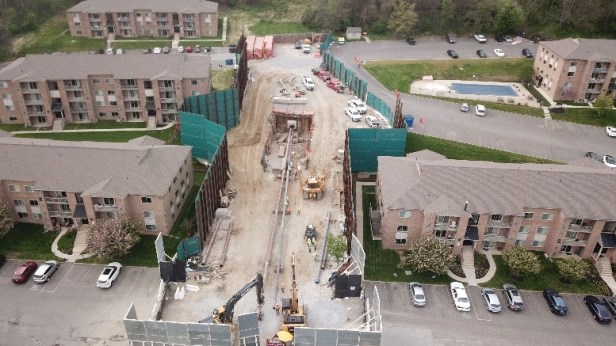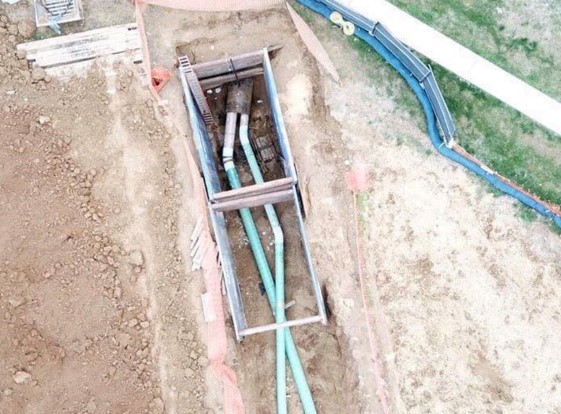Note: This post was a cooperative effort, with Lora Snyder and Ginny Kerslake pulling together all the information. I did the final editing. — George
Our work has paid off! On February 22, 2024, the PA Public Utility Commission approved a Final Form Rulemaking Order strengthening safety standards for intrastate pipelines transporting hazardous liquids.
The goal of these safety standards is to avoid the construction failures we witnessed countless times on Mariner East, including inadvertent returns of drilling fluids, subsidence events, and contamination of water wells. The regulations also address public safety aspects of the operation and maintenance of these pipelines.
You can read all the details in the comprehensive PUC report, but we have summarized the most important parts at the end of this blog post.
Dragonpipe Diary readers are well aware of the need for better pipeline safety standards. According to the PUC there have been 71 hazardous liquid pipeline accidents in Pennsylvania since 2010—with only six due to natural forces—and each of those resulted in a release or spill. Between 2017 and 2018, Energy Transfer had four pipeline accidents in Pennsylvania: a pinhole leak on ME1 in Morgantown; an explosion on Revolution in Butler County; an excavator striking ME2 in Delaware County; and a leak on the 12” pipeline which was later repurposed for the ME “Frankenpipe” in Delaware County. And since 2017, the PUC has investigated 243 instances of reported subsidence.
Make no mistake—we did this. These new rules only happened because community members spoke up. Everyone who participated in the Safety Seven and associated formal complaints. Everyone who commented at community meetings. Everyone who filed public comments or signed petitions during this rulemaking process in support of more stringent regulations. Everyone who has helped raise public awareness about the construction failures and catastrophic risk of Mariner East. Everyone who ever pushed the PUC to take action.
In the final rulemaking the PUC has even referred to comments submitted by members of the public, as well as by advocates, state legislators and local governments in support of these regulations. These comments were essential because the industry has been pushing hard against having any new regulations.
We thank the PA PUC for these long overdue pipeline safety enhancements.
But there’s a final comment period, and we need to be heard. We are not in the clear yet. This new rulemaking now goes to the PA Independent Regulatory Review Commission (IRRC) for its approval and the public can submit comments. After that it will go to the Office of Attorney General for form and legality, and the Office of Budget for its fiscal impact.
Here are the details on the IRRC “public comment opportunity” and some ideas for comments you might want to make.
The IRRC will take comments at its April public meeting. These can be given in person or via email. For in-person comments:
- When: April 18 at 10 a.m.
- Where: 333 Market St, 14th floor, Philadelphia, PA
Let the IRRC know in advance that you want to make an in-person comment by emailing irrc@irrc.state.pa.us.
Use the same email address (above) to make emailed comments, preferably prior to April 16 at 10 a.m.
When commenting, whether in writing or in-person, express your support for (at minimum), these new regulations. If desired, refer to specific regulations, summarized below. And if you have a personal experience or concerns to share that an enhanced regulation would address, do so.
Note that the new regulations apply only to intrastate pipelines in Pennsylvania and there are no retroactive design or construction regulations for those pipeline facilities that exist when the rule is made effective. However, the operations and maintenance, accident reporting, and public awareness regulations do apply to existing hazardous liquid pipeline facilities.
With these new regulations, hazardous liquid pipelines will have Pennsylvania-specific safety standards to comply with, in addition to federal PHMSA regulations.
Food & Water Watch is providing an easy on-line commenting facility here:
You can add your own message, or just use the generic one that F&WW provides.
But you are encouraged to provide comments directly to the IRRC, either in person or via email. If you do so, we suggest you highlight one or more of the following regulations in your comments.
Pipeline spacing. Maintain a minimum of 12 inches of clearance between the outside of the pipe and the edge of any other underground structure. (This is a major requirement–we saw numerous cases where Mariner East pipes were dangerously close to each other or to other structures.)


No pipelines under buildings. Pipelines must not be constructed or relocated under any building or dwelling.
Protection from vehicle strikes. Vehicle barriers are to be installed at above-ground valve stations adjacent to a roadway, unless there is a natural barrier.
Depth of cover. The pipeline operator must specify the intervals in its operations and maintenance procedures at which it verifies and maintains the federally-required depth of ground cover over its pipelines.
Public notification. The operator must hold at least one planned public meeting with local government, residents, and emergency responders at least thirty days before the commencement of drilling.
Geological and environmental impacts. For pipelines with a bore diameter 8 inches or greater, a bore depth greater than 10 feet, or pipeline length greater than 250 feet, the operator must conduct an analysis of geological and environmental impacts. The analysis must follow federal guidelines.
Contingency plan. The operator must develop a written preparedness, prevention, and contingency plan for potential impacts from drilling fluid discharges, potential impacts to public and private water supplies, and issues from the presence of underground mining and karst terrain.
Public warning messages. The operator must provide information to the affected public at least twice a year, including a warning that a leak from the hazardous liquid pipeline can cause property damage, personal injury, burns, asphyxiation, or death, or any combination of these. Additional twice-yearly messages to emergency responders are required, and to public officials annually (or more frequently as needed).
Licensed land agents. The operator must ensure that land agents hold a valid Pennsylvania professional license in one of the following fields: attorney, real estate salesperson, real estate broker, professional engineer, professional land surveyor or professional geologist.
Cathodic protection. The operator must have written procedures for the design, installation, operation and maintenance of cathodic protection systems. (Properly-maintained cathodic protection is essential to prevent pipeline corrosion.)

Let your voice be heard!

Dear Dragonpipe,
<
div>Many & Deep thank yous for your service and attenti
LikeLike
These new rules are great, but as far as I know we still have the same corrupt PUC crooks enforcing them.
LikeLike
George,
Congratulations on yet another example of your exceptionally investigative journalism.
The introductory illustration leading the article captivated me, which compelled me to read your blog immediately.
I do not see any photographer credits.
Who are the photographers? Their technical skill and creative sensibility enhance your piece dramatically.
Your readers need to know so they can engage their services in our continuing struggle to educate the public and protect our precious environment.
Sincerely,
Michael
LikeLike
Yes, I’m grateful for the excellent photography. I will let the photographers involved reply if they wish.
— George
LikeLike
<
div dir=”ltr”>George: Thanks for all your efforts
LikeLike